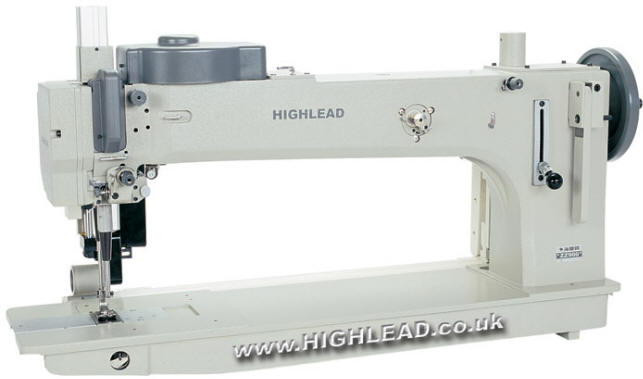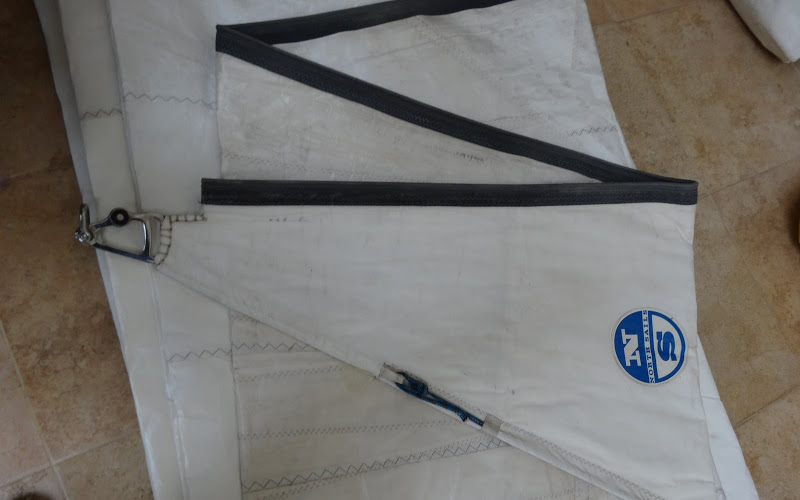Keep Sahara Out
Time to service the main sail starting at the head and working down. With in-boom furling this area is exposed to UV so we are replacing the sacrificial UV cover.
Removing the stitching and opening the UV strip an amount of Saharan sand fell out on each side. We knew we were carrying sand but machine washing didn’t make any difference. Unpicking is labour intensive and usually involves a loss of blood but the worst aspect of the job is removing the old acrylic glue from the old seam tape.
The sacrificial UV strip removed
We are using 7oz Challenge Cruiser sail cloth as our new sacrificial strip rather than Odyssey or Titanium Oxide coated material. It is definitely harder to work than the original. We hit a big problem in that it is impossible to roll the thick webbing and head of the sail to get it under our sewing machine arm. A sail of this size calls for a full loft with heavy industrial machinery and if only we had a Highlead like this one;

The current remedy is to handstitch through the old holes but at 1 hour per 6 inches to stich one side only (a half-stitch) this is not ideal. So we are now looking for a sail loft of 70ft by 30ft with a machine.
The old cover is used to form the pattern under supervision of the Ship’s Cat.
New material is hard to work with – we sewed in a reinforced section along the leech which made it harder still to shape but it’s worth the additional effort.
New North Sails logo’s ready to apply
We broke yet another needle and destroyed a strike plate by miss threading the top thread – this is our needle stock from size 90 for V92 to 135 for V138 thread. At the top end we are asking too much from a Sailrite LSZ1 with both thread and needle over the operating limits.
The head of the sail has to be hand sewn – the threads are knotted and welded to seal them.
Almost finished with some webbing required at the exit of the leech line. Eventually we rolled the sail into a cone and with six hands we managed to get a machine stitch across the base of the fabric – the picture shows the first line which is hand stitched.
We have been working hard on the headsail clew and destroyed numerous parts on our Sailrite. The clew is just able to fit under the foot at 5/8″ but with webbing and highly compressed layers of fabric 130 size needles shatter, base plates crack and V138 thread breaks. Hand sewing with a Monster Wheel does not resolve the issue. If we could take it with us we have concluded that we would go with a Solent Sewing Machines Coastal ML450 or ML650 but at about 200lbs we are unable to handle it.

